Urson
"I had heard the stories, of course. Towering figures in the snow, cloaked in silence, with eyes like coals and hearts like hearths. But no one truly believes in Urson until the moment they are seen, and even then, only if they survive the meeting. I count myself among the fortunate, though some still call me a liar."The Urson are an ancient race of intelligent bearfolk native to the White Wastes, the frigid polar region of the world. Towering and resilient, they are deeply spiritual beings who believe they were created by the divine Bear Spirit, a maternal goddess who gifted them with purpose, strength, and the sacred duty of maintaining balance in the world. This belief is not merely religious—it is the foundation of their society, culture, and moral compass. Everything the Urson do, from how they raise their young to how they resolve disputes, centers around harmony with the world and the teachings of Bear. At the heart of traditional Urson society is the Sanctuary, a vast iceberg-city carved from glacial masses drifting through the arctic sea. Each Sanctuary is led by two equals: the Voice, a spiritual conduit who communes with Bear, and the Claw, a protector who enacts her will. Urson tribes live communally, sharing resources, revering quiet reflection, and valuing community over individual ambition. Conflict is not unknown, but personal grudges are considered disruptive to the balance and are resolved through ritual, wisdom, or forceful intervention if necessary. Over time, some Urson migrated south into the hinterlands and boreal lowlands, where they adapted to warmer climates and new ways of life. These Lowland Urson developed more secular and pragmatic societies, led by a Claw and a council of elders rather than a divine Voice. Though they retain many of their ancestors’ values—especially the respect for nature and communal living—their coats have turned brown or black, their faith more symbolic, and their governance more democratic. Despite the divergence, both Polar and Lowland Urson still share a common root: the belief that they were born to guard the balance of the world.
Physiology
The Urson are large, ursine humanoids averaging between 8 and 9 feet in height, with dense fur, thick skin, and immense physical presence. Their bodies are adapted to extreme cold, with powerful lungs, insulating fat layers, and immense endurance. Fur colors vary by lineage: Polar Urson possess white, pale grey, or silver coats suited for the tundra, while Lowland Urson have darker hues such as rust, chestnut, deep brown, and even black. Their claws are used for labor, combat, and ritual; their voices carry low, rumbling resonance. There exists distinct sexual dimorphism among the Urson, though not in a way that defines status. Male Urson tend to be broader, denser in muscle, and possess greater physical mass, particularly in the upper body and limbs. They are more frequently chosen—or choose—to become Claws, the martial and protective leaders of the tribe. By contrast, female Urson tend toward softer, fuller physiques with higher fat distribution, giving them enhanced cold resistance and greater stamina for long meditations, fasting, or spiritual isolation. Females are more commonly selected as Voices, seen as naturally attuned to the rhythm of Bear's whisper. These tendencies are respected as patterns—not rules—and many Urson are exceptions to them.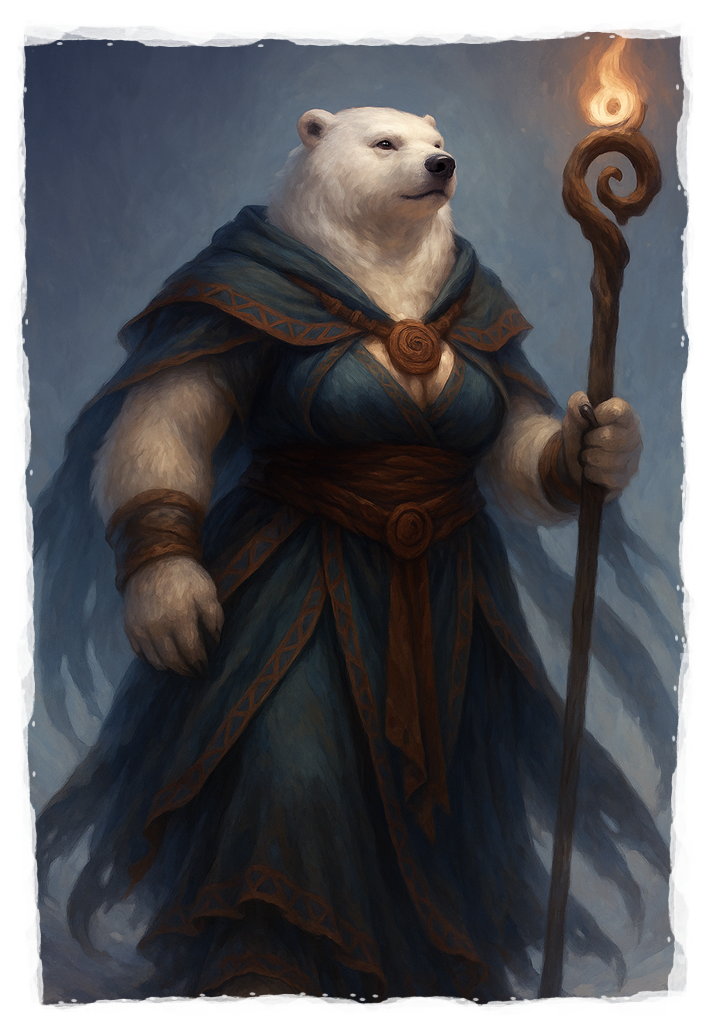
Culture & Society
At the heart of Urson culture lies the principle of Balance; between strength and compassion, between survival and sacrifice, between the individual and the whole. Every Urson is taught from youth that they are a single thread in a vast, living weave. The will of Bear spirit is sacred and interpreted as the natural flow of life itself: to disturb that flow recklessly is to invite spiritual decay. While individual excellence is respected, no act is seen as virtuous unless it serves the greater good of the tribe or Sanctuary. Community always comes before the self. Urson abhor selfishness, ambition for its own sake, or disruption of harmony. It is not shameful to weep, rage, or desire—but one must do so in ways that do not unravel the fabric of the whole. Quiet discipline is cherished more than loud bravery. Those who act without considering consequence are said to be “wandering beyond the track,” a dangerous spiritual condition treated with ritual isolation, counseling, or correction by the Claw.Social Norms
Urson society thrives on mutual provision. Food, tools, and shelter are shared communally; hoarding is seen as an illness. Elder artisans pass their craft freely to younger paws. When a Claw returns from a hunt, the kill is laid at the Sanctuary’s hearth before any individual claims their share. Generosity is not transactional—it is sacred. Emotional restraint is a cultural ideal. Public displays of anger, lust, or grief are viewed as private burdens best processed through meditation, storytelling, or ceremony. This does not mean the Urson are joyless; rather, their emotions run deep and slow, like a river beneath ice. Ritualized sparring, music, and shared storytelling are common ways to release emotional pressure in structured, socially-acceptable ways.Family Structure & Child Rearing
Urson cubs are rare and precious. They are raised communally within a ring of caretakers, never left alone, and never exposed to outsiders until their fur thickens and they can speak. Mothers and fathers may be known, but parenting is shared between a Circle of Kin, often including shamans, elders, and apprentices who specialize in child-guiding. From a young age, cubs are matched with apprentice mentors—older Urson who embody skills or virtues suited to the child’s nature. This pairing is spiritual as much as practical, intended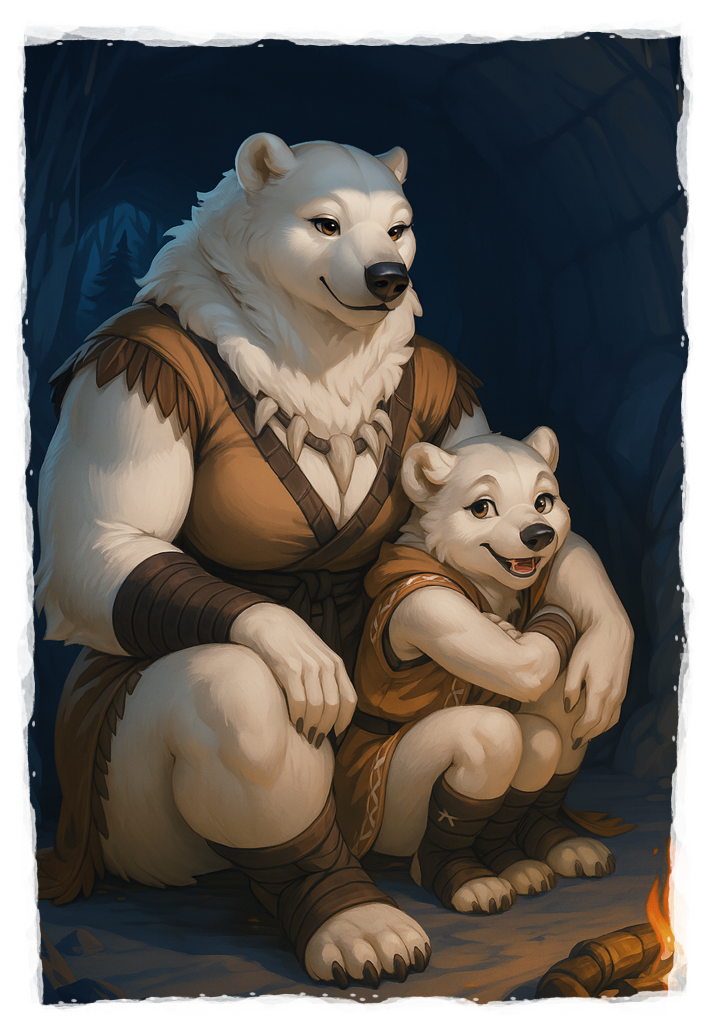
Spiritual Beliefs
At the heart of Urson spirituality is the Bear Spirit—known in sacred rites as Borr, Mother Bear, or the Great Protector. She is not simply a deity, but the divine origin of all Urson life: the one who shaped them from snow and breath, who gave them thought, warmth, and purpose. Borr embodies stillness and strength in equal measure—the silent guardian who slumbers beneath glaciers, and the fierce matron who kills to protect the cycle. Mother Bear is never depicted in full. Instead, she is known through symbols: a pawprint pressed in snow, a crescent moon wrapped in fur, a mountain reflected in still water. She does not speak in commandments. Her will is felt—subtle, vast, and wild—and interpreted through the trance-bound visions of the Voice, each Sanctuary’s spiritual conduit.The Mists
To hear Borr is to drift into the Mists—the veil between worlds, what the Urson call the border ethereal. This is not a place but a state of sacred attunement, a spiritual threshold brushing the edge of the Eternal Hunting Grounds. Within the Mists, time softens, memories tangle, and visions come unbidden. Here, the Voice opens their soul to Bear’s presence. But such communion is not without peril. Prolonged contact with the Mists can bring on the Rage of Bear—a spiritual fever in which the Voice begins to see imbalance in all things, and may lash out to “correct” it through force. Rare but feared, those who succumb are isolated and tended to by shamans… or, when necessary, granted a merciful death to restore harmony.Bear’s Flame
Among the most sacred emblems of Urson belief is Bear’s Flame—not merely a fire, but a symbol of comfort, guidance, and communal warmth. When Borr first breathed life into the Urson, she gave them two gifts: the breath of survival, and the flame of unity. That flame lives in every hearth, every campfire, and every circle of bodies gathered close beneath the stars. To sit by the fire is to offer prayer—to be seen, known, and warmed. During storms or grief, the Urson gather in silence around the flame, sharing food, stories, and quiet companionship. In sacred rites, the Voice may light a silent flame at the heart of the Sanctuary—a beacon for lost souls, both wandering and departed. The flame marks life’s passages. Newborn cubs are shown their first fire on cold nights so that Bear may see and shelter them. Mated pairs often light a shared flame in lieu of ceremony. To extinguish a flame without intention is a grave taboo—seen not as carelessness, but as rejection of Bear’s love.Reincarnation & Enlightenment
The Urson believe the soul travels in cycles. Each spirit is reborn again and again—Urson to Urson—until it achieves perfect balance in thought, action, and presence. Only then does it climb the Mount of Silence, transcending mortal form to become one with the eternal pattern. What lies beyond is never spoken; to describe it would cheapen its truth. Other races are viewed as being on earlier rungs of this spiritual ladder. The Urson see themselves as guides and stewards, tasked with nudging others toward balance—even through violence, when necessary. But individuals are judged by their deeds, not their blood. A goblinoid who honors the cycle may be embraced as kin. A Human who sows chaos may be met with cold judgment and claw.Rites & Rituals
Urson rituals are silent, symbolic acts that bind the tribe in reverence and purpose. The most sacred of these is burial at sea: the dead are laid upon a carved drift-ice bier, surrounded by tokens of their life. Archers then loose flame-tipped arrows, setting the ice alight—a final gift of warmth, guiding the soul to the Mists.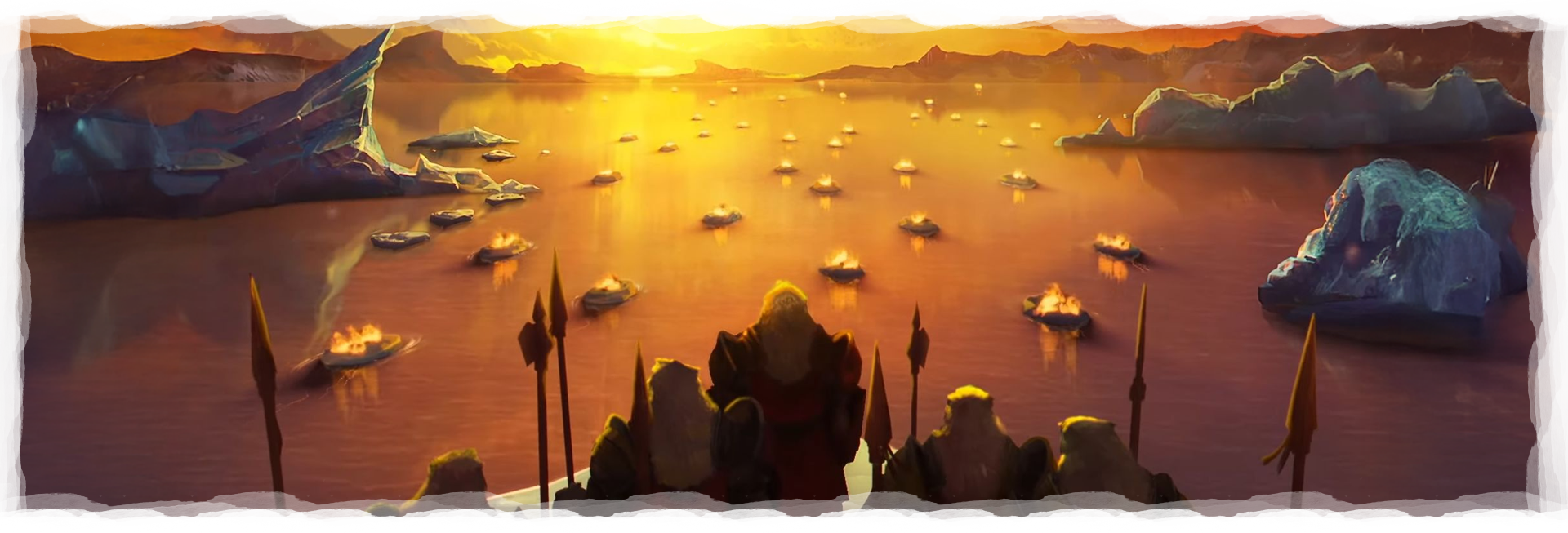
Political Structure
Polar Urson. In the ancient Sanctuaries carved from glacial ice, the Urson tribes are led by two leaders of equal standing: the Voice and the Claw. This dual leadership reflects their most sacred principle—balance—and is seen as a living embodiment of Bear’s will.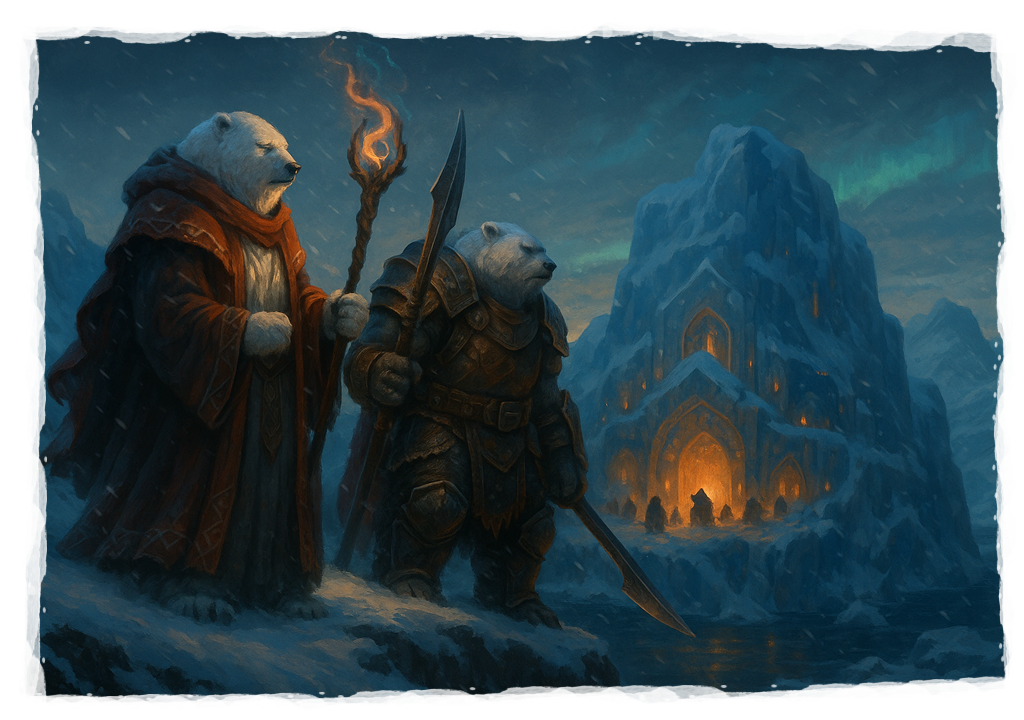
Succession & Retirement
In both traditions, leadership is not inherited but chosen, often through dreams, omens, or deeds that demonstrate an Urson's balance, strength, and clarity. Voice and Claw are typically chosen together, their fates bound in dual service to the Sanctuary. If one falls, it is customary—though not required—for the other to step down. Most do. When a Claw or Voice senses the end of their path approaching—be it through age, ailment, or spiritual calling—they begin the Rite of Dimming. Over several days, they relinquish their duties, pass on their tools or tokens, and withdraw from public life. A new Voice and Claw are named through consensus, vision, or trial. The departing leaders fade, returning to the community as silent elders or vanishing alone into the snow. Among Lowland Urson, leadership succession is more structured. The Council selects the new Claw from among proven warriors or guardians, sometimes placing a potential successor in a watching role—observing and advising without wielding full power. The transition is marked by celebration rather than mourning, a sign of growth rather than loss.Sanctuaries & Hearthholds
Sanctuaries. Urson sanctuaries are colossal iceberg-cities carved into the drifting glacial masses of the White Wastes—spiritual bastions where the Polar Urson live in harmony with the land, each other, and the will of Bear. These moving strongholds serve as both homes and holy sites, afloat on frozen seas, guided by ancient star-charts and instinctual memory passed down through generations of Claws. Each Sanctuary is sacred ground, sculpted with reverence and built for survival. At the heart of every Sanctuary lies the Hearth Hall, a domed chamber where the Communal Flame of Bear burns unceasingly—a symbol of warmth, unity, and divine presence. The surrounding architecture is stark and purposeful: shared sleeping halls, story circles, meditation grottos, and shrines etched with ancient glyphs. Ice walls are reinforced with whalebone and stone, while hide-draped ceilings bear the colors and emblems of the tribe. Windows are cut to align with constellations or seasonal winds, and floors are marked with spiral paths that mirror Bear’s eternal cycle.
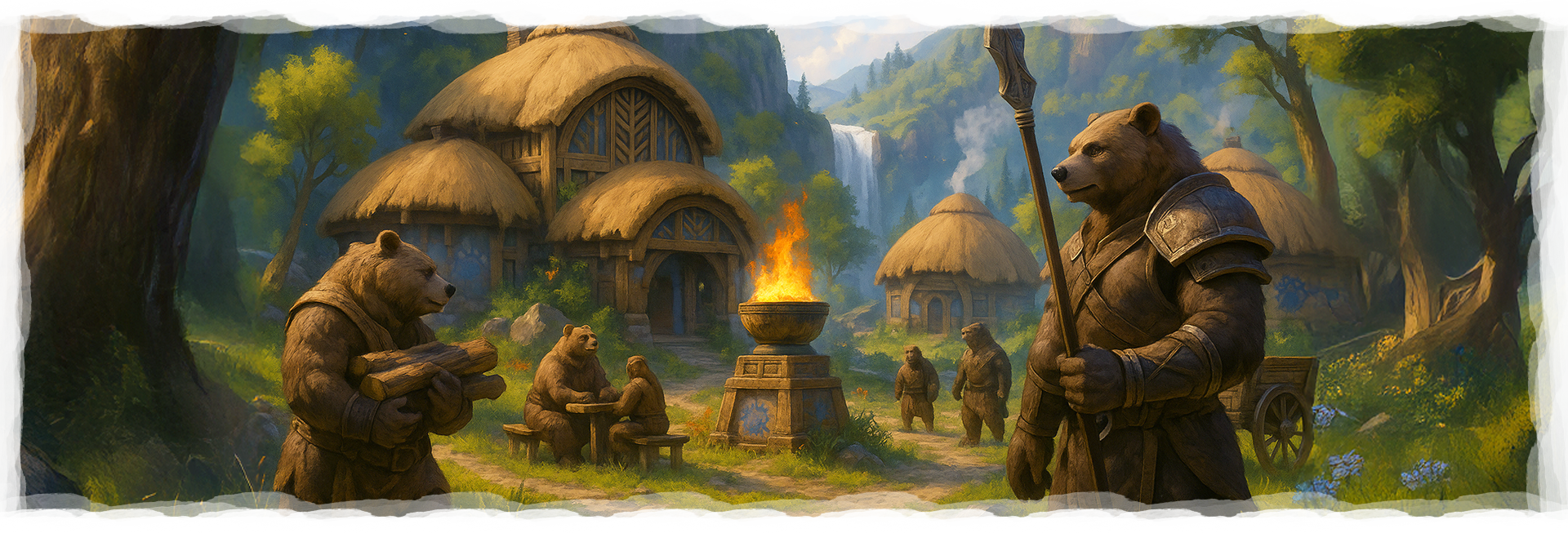
Urson Names
Urson do not pass down names through bloodlines. Instead, names are chosen, not given, selected by each Urson at pivotal moments in their lives. A cub may be nameless until their third or fourth winter, at which point they are allowed to speak and select a name that reflects their spirit, a memory, a lesson, or a symbolic image that resonates with them. An Urson may change their name multiple times throughout life—each name a reflection of growth, grief, or revelation. Urson names are always composed of descriptive phrases rather than traditional personal names. These may be poetic, literal, or metaphorical, often inspired by the natural world, emotional experiences, or spiritual insight. Names are never humorous or mocking; even light-hearted Urson choose names with deep personal meaning. Among Polar Urson, names are more solemn and symbolic, while Lowland Urson are known to choose more lyrical or even playful combinations. Urson do not have surnames. Instead, they may identify by their tribe or Sanctuary. For example, Still Waters of the Pale Drift or Stone Voice, Bear’s Chosen. Polar Urson: Still Waters, Snow Above Silence, Cracks-in-Ice, Stone Voice, Ash Beneath Stars, Watcher in the White, Fire-for-Blood, Drift-of-Sky, Broken Paw, End of HowlLowland Urson: Farthest Shore, Laughs at the Dawn, Soft Honey Song, Last Ember, Meadow-Watcher, Long Paw, Swift Between Trees, Ash-Heart, Hollow Tooth, Dances Under Rain
Lifespan
225
Average Height
9'5"
Average Weight
1200 lb.
Geographic Distribution
The Last Flame
Among the most sacred songs in Urson tradition, “The Last Flame” tells the story of the Fall of Pale Drift, an ancient Sanctuary swallowed by cracking ice and rising tides during a brutal convergence of storms. In Urson oral history, it is said that the Voice of Pale Drift, overcome with visions of doom, ordered the Communal Flame of Bear to be carried by the youngest among them—cub-bearers wrapped in fur, flanked by Claws who bled and fell to hold the path open. The survivors wandered for thirty nights, guided by constellations and whispers from the Mists. Of the hundreds that once called Pale Drift home, only a handful reached safe ice. There, they built a new Sanctuary, founding what would become the Drift of Ashen Light. This song is sung not only to honor the fallen, but to remind all Urson that the flame is not a place—it is a duty, and to protect the cubs is to preserve the spirit of Bear herself.The Last Flame
An Urson Migration Hymn Verse 1Crack in the ice, sky full of dread
Voice called the flame, Claw raised the dead
Cubs in the snow
Carried with care
Verse 2
Wind took the walls, sea took the halls
Names turned to mist, carved into calls
Flame did not die
We took it far
Verse 3
Claw bled the path, Voice sang the stars
Bear walked with us, close to our scars
Each breath a vow
Each step a name
Bridge
Claw stands strong… Voice is near…
We endure… Year to year…
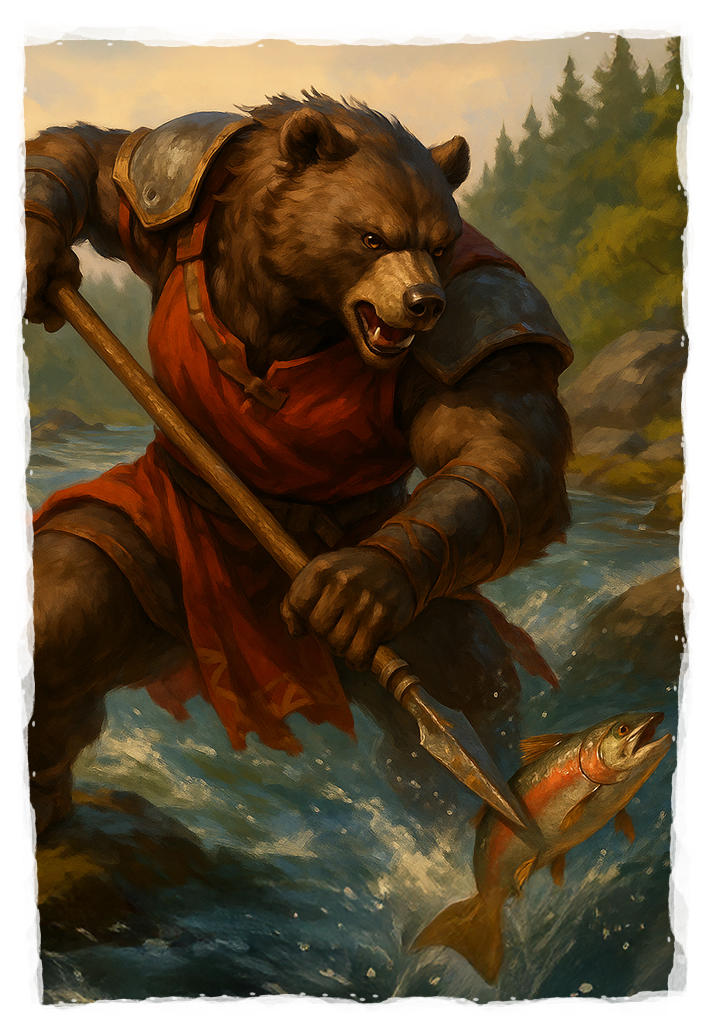

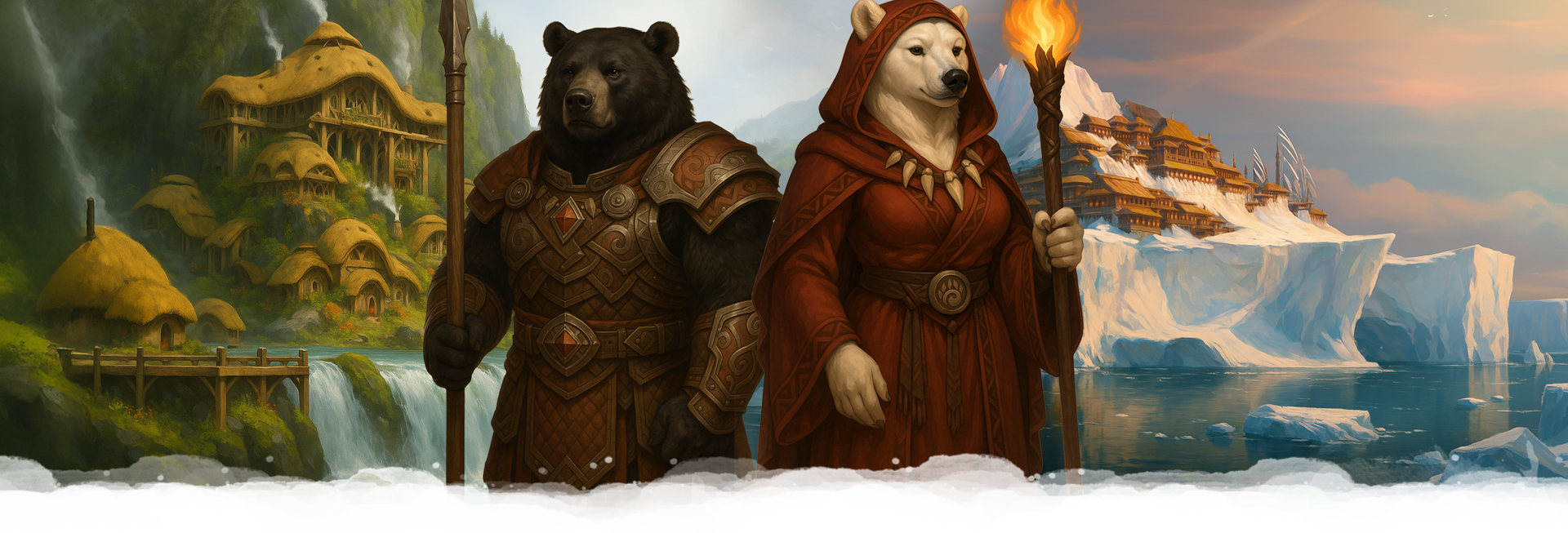

Comments